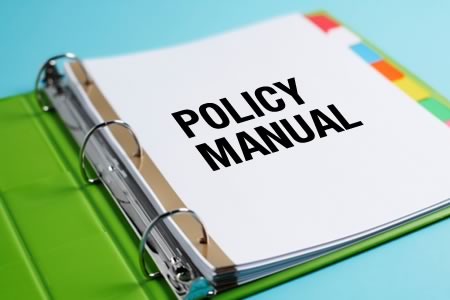I’ve had the privilege of serving as the chief officer of a few campus police and safety departments over the course of my career. During this time, I have also had the privilege — and the great responsibility — to create, modify, renew, or remove department policies, be they rules and regulations, general orders, standard operating procedures, or some combination of two or more of these forms of internal governance.
Looking back, I readily admit I saw these rules very differently depending upon the position I held at the time — whether I was the chief/director or a captain, watch commander, detective, or officer. But through those lenses, I found a highly consistent theme threaded through every policy manual I relied on as I served my communities.
That thread — that common ingredient in every policy manual I learned, exercised, and often times even challenged — was that the policy manuals were constructed for my organization, including my co-workers and me, to succeed. As I advanced through my career, I began to understand with an increasingly wider perspective that each of my co-workers and I also had enormous power to influence those policies quite substantially and the ways they could continue to support our work as we in turn supported and served our communities. In my experience, and the experiences of so many others I have learned greatly from throughout my career, the overwhelming majority of campus police and security officers (and municipal law enforcement professionals as well) rightly want to see strong organizational policies and see them adhered to, maintained, and enforced. Many of us want the rank and file to experience the depart- ment’s standards being lived out daily. All department policies and rules give employees confidence and enable them to support one another with a culture of accountability.
When it comes to creating such a culture, these are the key ingredients: (a) strong standards, (b) a commitment to the purpose and the mission of the organization, and (c) the form of leadership that demonstrates the standards are being watched for and encouraged constantly.
The goal of the organization is to grow together and share learning in every direction. In other words, successful organizations lead up as well as down and across peer groups. And the most successful of these organizations follow up, down, and among peer groups.
We know well that leaders create followers as skillfully by leading others as when they enthusiastically follow others. This again is where organizational policies — when crafted for success— reinforce the opportunity that exists for literally every member of every organization. Here’s another way to look at what we’re trying to accomplish: The purpose, value, and applicability of every regulation in any campus law enforcement agency must be as strongly attached to its chief officer as it is to every other employee. If that fails, two things immediately become evident and of concern.
First, it becomes obvious that the culture of accountability doesn’t exist as fully as we would prefer to believe. If a person of a superior rank en- joys greater latitude or a less-exacting standard of performance than his staff, then we are clearly not leading in all directions and we are most certainly not following our colleagues and their examples of a professional manner. But just as importantly, we are seeing a failure of the very policies that we had previously committed ourselves to. Why and how does this happen, and how and when can we resolve it?
It happens whenever we choose to not to hold someone accountable when they fail. We must correct such actions immediately by openly holding ourselves accountable and reaffirming our commitment as quickly as we can. This swift response, above all else, illustrates the depth of our care for one another and the organization. With proactive techniques, and an open and articulated mindset that supports the vision, leaders in the organization will preserve the intent and value of standards that support a culture of discipline and success.
This article was originally published at http://www.campussecurityreport.com.
